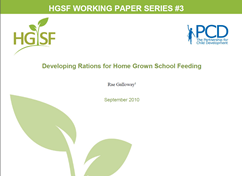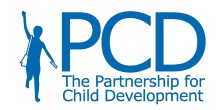 HGSF Working Paper Series #3 Developing Rations for Home Grown School Feeding
HGSF Working Paper Series #3 Developing Rations for Home Grown School Feeding
HGSF Working Paper #3 Developing Rations for Home Grown School Feeding
Assessments conducted by the United States Department of Agriculture (USDA) in four countries (Ghana, Kenya, Mali, and Rwanda), recommended that “menu, kilocalorie, and nutritional guidelines” be established by countries participating in the HGSF initiative.
However, the need for these guidelines will depend on the objective of the ration itself, and determining the goal of the ration should be the first step for HGSF programmes.
The third paper in the HGSF Working Paper Series titled, Developing Rations for Home Grown School Feeding discusses how to set the goals for rations based on educational and nutrition outcomes and suggests important factors for the development of a planning tool for the rations.
If the goal of the HGSF program is to also improve the nutritional status of school children by increasing energy intake, staples provided in school feeding programs will need to be additive to the child’s diet, and complementary educational programmes to reduce substitution will be needed.
If the goal is to improve the micronutrient status of school children, other foods (e.g., nutrient-dense staples such as orange-fleshed sweet potatoes, fruits, vegetables, and animal products) will need to be part of the ration or the ration will need to be fortified with micronutrients in school feeding programmes.
Improving the nutritional status of school children, particularly improving intake of some of the micronutrients, such as iron and iodine, will lead to improved cognitive function as well as improving enrolment, attendance, and retention. To do this, planning with farmers will be needed to assess what is currently being grown and the types of foods they need to produce in the future that meet educational and nutritional goals of the HGSF programmes.
- Download HGSF Working Paper Series #3 Developing Rations for Home Grown School Feeding
- Read more about the HGSF Working Paper Series





